This blog post goes out to all you wonderful Amazon FBA sellers, at all levels, who are working through the realities of trying to get a good ROI (return on investment) in your FBA business. That should be all of you, right? You’re all trying to get a good ROI and make money, right?
Maybe you’ve heard Amazon FBA teachers say things like, “Be sure you’re checking on the ROI of potential inventory. You don’t want to buy anything less than 100% ROI”…or 80%…or 75%…and maybe you’re thinking “R-O-I don’t know what you’re talking about.”
Or maybe you’re a more experienced seller, and you’re less concerned with figuring out how to calculate your ROI and more concerned with making sure your ROI is at the right percentage for your stage of business.
Either way, our hope is that this blog post will give you a framework for thinking through some of the main questions that come up regarding ROI and selling inventory through Amazon FBA.
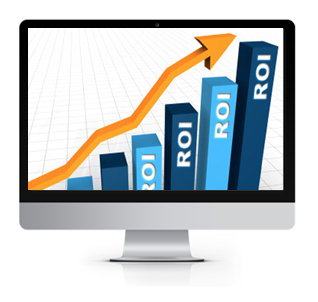 ROI Defined
ROI Defined
Before we get much further, let’s set up a basic definition of ROI so we’re all on the same page:
With Amazon FBA, ROI is the amount of money you earn in profits from your investment in inventory. You can look at the ROI of your business as a whole, and you can look at the ROI of each individual ASIN you are selling.
ROI is calculated as a percentage. You are comparing the profits you make to the buy cost of the item that you’re selling. The formula for calculating ROI is net profits divided by the buy cost of your item, then multiply the answer by 100 to give you the percentage.
Here’s a hypothetical (and very basic) example:
You buy an item to resell. The buy cost of the item is $10, and you sell it for $30. Amazon then takes $10 in fees out of that $30, and you’re left with $20 as your gross profits. You invested $10 in your buy cost, so you subtract that $10 buy cost from the $20 gross profits to get $10 net profits. To figure the ROI, you divide $10 net profits by $10 buy cost, then multiply by 100 to give you 100% ROI.
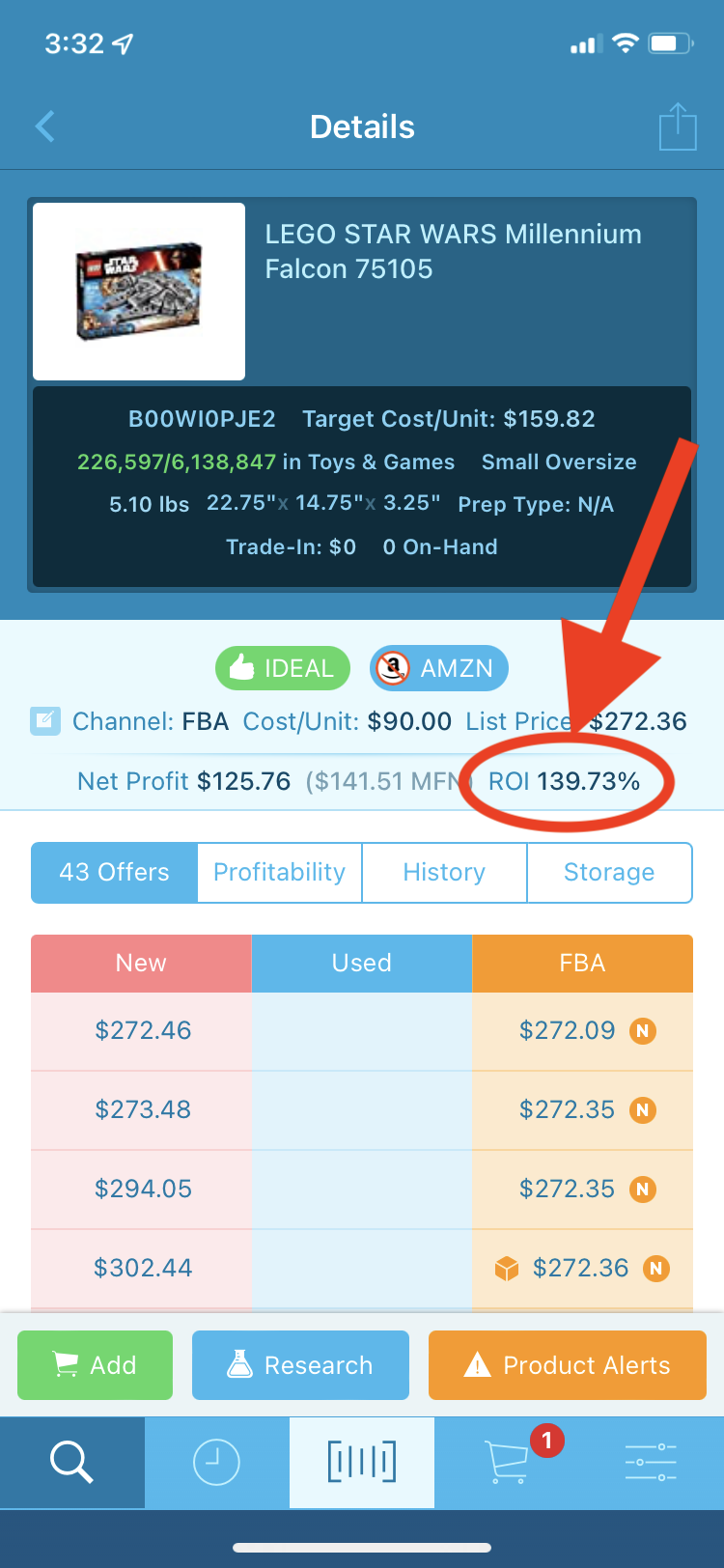
In another example, you buy an item for $10 to resell, and after Amazon takes out their fees you’re left with $12 of gross profits. In this instance you subtract $10 buy cost to give you a $2 net profit. To figure the ROI, you divide $2 net profits by $10 buy cost, then multiply by 100 to give you 20% ROI.
The great news is that you don’t need to worry about making all of these calculations on the fly while you’re sourcing for inventory. You can use one of the many great tools available for Amazon sourcing and automatically calculate your ROI. For sourcing with your smart phone, we recommend the Scoutify app bundled with InventoryLab. For online arbitrage and wholesale sourcing, we recommend the Chrome extension RevSeller (use the code FULLTIME to get $20 off your first year).
Each Amazon FBA seller will need to decide your own personal goals for the type of ROI you’re aiming for. Many times that ROI goal will change over time, as your business changes and as you gain more experience in selling on Amazon. Let’s take a look at ROI for sellers in a variety of situations and experience levels.
Beginning Sellers and ROI
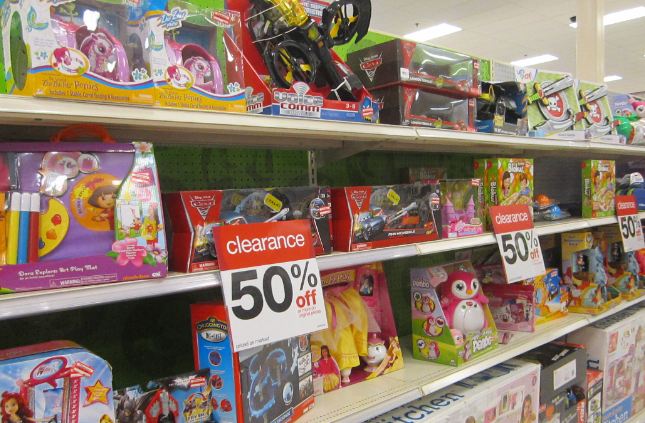 At the beginning stages of your Amazon business, many sellers are focused on sourcing garage sales, thrift stores, and maybe some retail or online clearance sections. With each of those methods of sourcing (especially with garage sales and thrift stores), you tend to find items with super high ROI when sold on Amazon. You might be able to buy an item for a quarter and sell it for $12, or you buy an item for $1 and sell it for $40. See what we mean about super high ROI? Sometimes doing the math on that ROI is laughable – you could easily have ROI in the four digit range.
At the beginning stages of your Amazon business, many sellers are focused on sourcing garage sales, thrift stores, and maybe some retail or online clearance sections. With each of those methods of sourcing (especially with garage sales and thrift stores), you tend to find items with super high ROI when sold on Amazon. You might be able to buy an item for a quarter and sell it for $12, or you buy an item for $1 and sell it for $40. See what we mean about super high ROI? Sometimes doing the math on that ROI is laughable – you could easily have ROI in the four digit range.
Now, when you’re dealing with retail and online clearance sections, a good solid ROI is around 100%, or “doubling your money.” When you’re a true beginning at reselling on Amazon, it’s good to stick to the “rule of three,” which basically means if you’re able to sell the item at three times the buy cost, you will be making 100% ROI.
 There are a couple of main benefits to focusing on selling items that have a high ROI percentage (100% ROI or more):
There are a couple of main benefits to focusing on selling items that have a high ROI percentage (100% ROI or more):
- Selling items with a high ROI gives you more room to make mistakes. You have more room to lower your price if you need to at some point. If the price on Amazon goes down from the time that you purchase an item, send it in, and are able to sell it, you will still have plenty of wiggle room with your price. You can lower the price and still make money off of the sale, even if you’re not making 100% ROI.
- Selling items with a high ROI is also a great way to learn a new category. If you’re uncertain how an Amazon category works when it comes to how fast items typically sell within that category, focusing on higher ROI items will give you that wiggle room to fiddle with your prices and make sales before you start getting impacts on your IPI (Inventory Performance Index) or you start accruing more than one month’s storage fee.
Intermediate Sellers and ROI
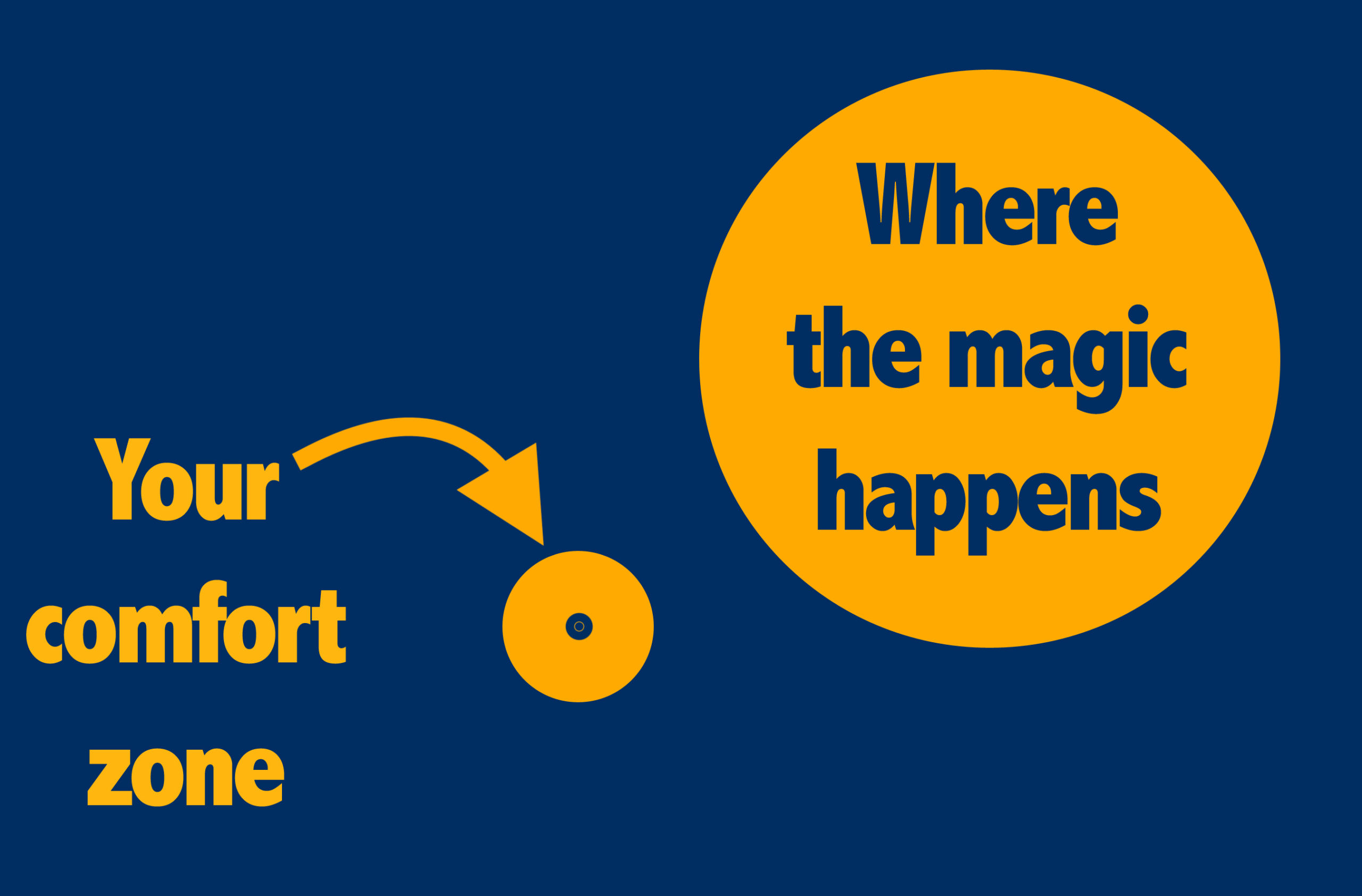 When it comes to intermediate sellers who have several months to a year or more of selling experience under their belt, it might be time to start thinking about lowering your ROI comfort range a little bit to test out how an expanded ROI range might impact your business.
When it comes to intermediate sellers who have several months to a year or more of selling experience under their belt, it might be time to start thinking about lowering your ROI comfort range a little bit to test out how an expanded ROI range might impact your business.
If you start selling inventory with a lower ROI percentage, you will have less wiggle room for mistakes and less wiggle room for lowering your prices – BUT your sourcing skills at this point should be improving, you should be making smarter buying decisions, and you won’t need as much wiggle room as you once did. You can test out lowering your ROI comfort zone to 80%, 70%, eventually even 60% and see how things go. You likely won’t be needing to lower your prices over time as much as you were at the beginning of selling on Amazon, so you might actually be making the same ROI percentage overall. See how things go for a test period at a new ROI percentage goal, look at what your successes and failures are in that time, and reevaluate how to move forward in the future.
 Benefits to lowering your ROI percentage goal (60-80% range) as an intermediate seller:
Benefits to lowering your ROI percentage goal (60-80% range) as an intermediate seller:
- Selling items with a lower ROI percentage range expands the amount of inventory items you’re able to buy to resell on Amazon. By lowering your ROI range, you’re expanding your sourcing criteria and opening up more items as a possibility to add to your inventory. Now you might be able to buy items that you would have passed on previously.
- Selling items with a lower ROI percentage range doesn’t necessarily lower your profits. You might have a lower percentage of profits per item, but you will be able to sell items at a higher volume, which will lead to higher dollar amounts of profits overall. Selling at a higher volume will give you an opportunity to gain even more confidence in your sourcing skills over time.
Advanced Sellers and ROI
As you get even more experience and more confidence in your sourcing strategies and buying decisions, then you can continue to work toward being an expert seller when it comes to ROI. At this point your ROI comfort zones are likely to be even lower, in the range of 30-60% ROI.
Yes, at this point there’ll be even less room for mistakes when it comes to pricing, but as your skills become more advanced and you become more comfortable with a lower ROI, again, it’s going to lead to even more sales and more profits. You will be selling an even higher volume of items, and the rewards of making the right sourcing decisions at a lower ROI will help you grow your Amazon business over time.
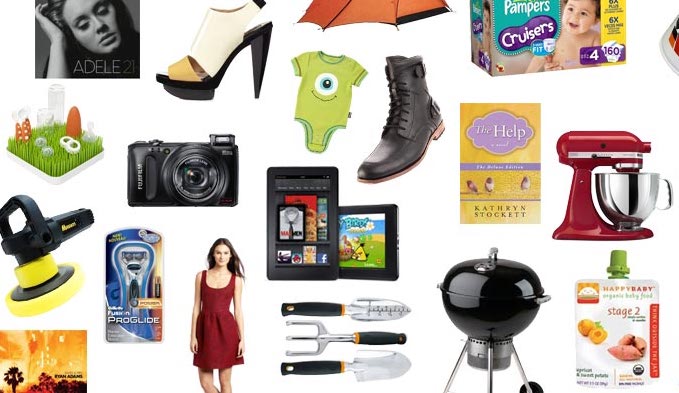
One point to remember is that you can have different ROI comfort zones within different categories. You don’t have to be willing to sell items at 30% ROI across the board in every category on Amazon. That 30% ROI might work great in one category but be awful in another, depending on the sales velocity in the category. For instance, you might decide now that you’ve got a couple of years of experience selling on Amazon that you are comfortable selling books or toys that have a 40% ROI, but if you are selling shoes or grocery items, you might be more inclined to source items with an 80% ROI level.
 Understanding sales velocity is key at the more advanced level when it comes to choosing your ROI range. Maintaining a good ROI really depends on multiple factors within each category, especially how fast the items are going to sell once they arrive at the Amazon warehouse. You don’t want to have an item that sells at 30% ROI sitting at a warehouse for three months before it sells, with storage fees eating up your profits – while an item at 150% ROI can stay at the warehouse for two or three months without losing all your profits.
Understanding sales velocity is key at the more advanced level when it comes to choosing your ROI range. Maintaining a good ROI really depends on multiple factors within each category, especially how fast the items are going to sell once they arrive at the Amazon warehouse. You don’t want to have an item that sells at 30% ROI sitting at a warehouse for three months before it sells, with storage fees eating up your profits – while an item at 150% ROI can stay at the warehouse for two or three months without losing all your profits.
Hopefully this post has helped you learn some new things about ROI or confirmed for you some things you already knew. Maybe this post will help you come up with a new sourcing strategy based on how long you’ve been selling on Amazon. We hope you’re able to make some smart sourcing decisions that will expand your ROI criteria over time and allow you to broaden the inventory items your business is able to buy and resell.
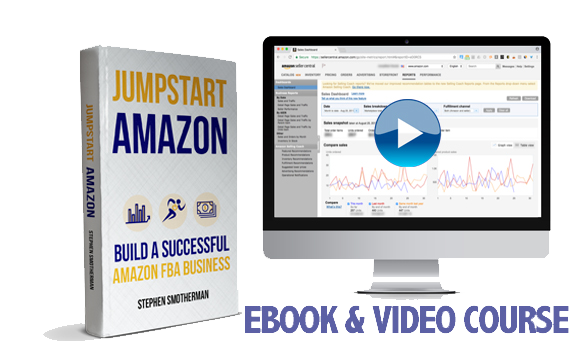 JumpStart Amazon:
JumpStart Amazon:
Build a Successful Amazon FBA Business
By now you know that running a successful Amazon business takes hard work, but you also want to be sure you spend your time focusing on Amazon FBA strategies that are actually proven to provide the results you’re looking for. If you’re ready to finally get serious about your Amazon FBA business, then I invite you to check out JumpStart Amazon: Build a Successful Amazon FBA Business.
JumpStart Amazon is a combination video course and ebook. The ebook is over 220 pages filled with the content and graphics you need to start a successful Amazon business from scratch. The video course features 5 main sections, 19 content-packed modules, and over 40 videos adding up to over 10 and a half hours of video training. This training is set up to help you build a solid foundation and then know how to find growth and success on top of the basics. This course is packed with more results-focused knowledge than any other ebook out there centered around starting an Amazon business. Find out more about JumpStart Amazon today.
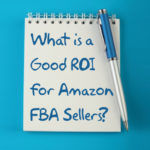

Leave a Reply